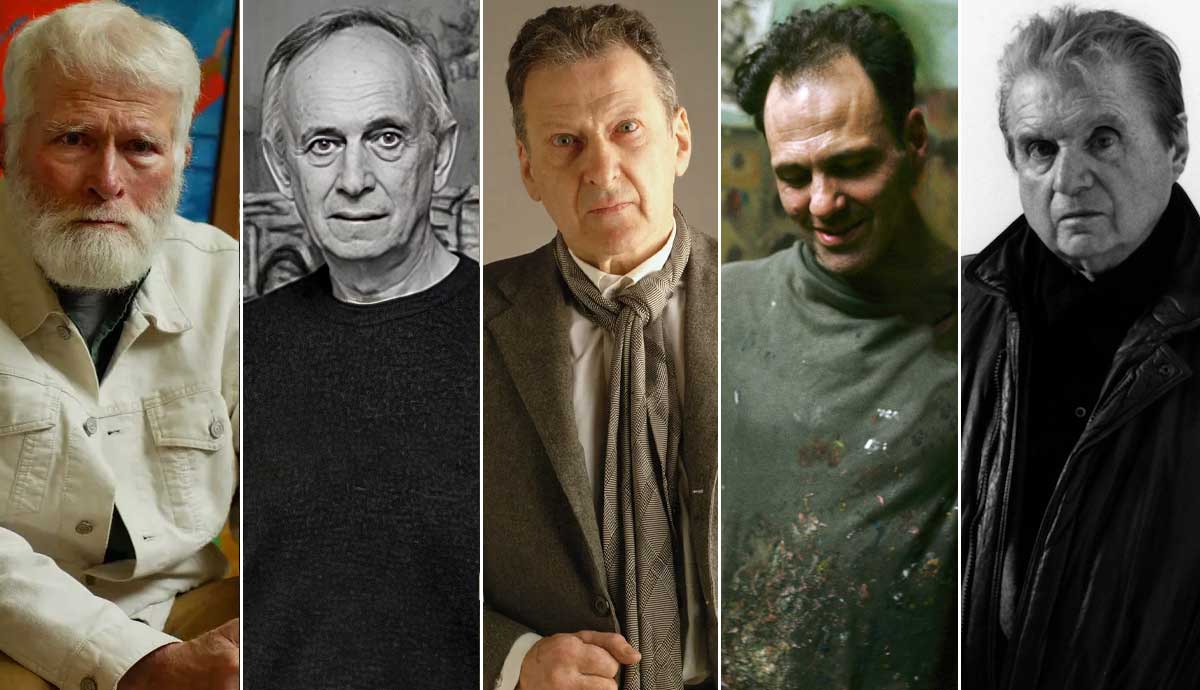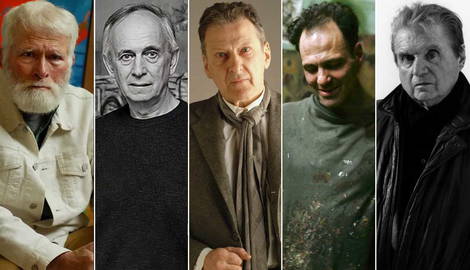
The School of London was a loosely-knit group of artists working in London in the aftermath of World War II, who explored all figurative and expressive styles of painting in various individual ways. The group were united as a movement by the artist R.B. Kitaj, who curated the exhibition The Human Clay at the Hayward Gallery, London, in 1976, and first described the artists he had selected as the ‘School of London.’ Numerous artists of note were included in this iconic exhibition, which deliberately broke away from prevailing styles of conceptual and minimal art, proving there was still much life left in expressionistic, gestural and figurative painting. We take a look through the major artists associated with the movement, many of whom are now household names.
R.B. Kitaj

American painter R.B. Kitaj trained as a painter in London, and moved to live there in 1972. Within his own practice he worked across painting, printmaking and drawing with a lyrical, figurative style that explored various emotive, political, personal and literary narrative themes. He often incorporated photographic imagery or references to popular culture, in a nod towards the language of Pop Art, but with a looser, freer approach. Following The Human Clay in 1976, Kitaj and a series of artists from the Hayward display were included in the British Council exhibition A School of London: Six Figurative Painters in 1987.
Francis Bacon

British painter Francis Bacon was an instrumental artist in post-war Britain, painting haunting, disturbing figurative paintings of contorted bodies and screaming faces at a time when many around the world were still recovering from the brutalities and devastations of war. Bacon had a wide circle of friends who would frequent the Soho area of London, meeting to have lively discussions about art and ideas. His close friendship with Lucien Freud, in particular, became a catalyst to the foundation of the School of London.
Lucian Freud

Lucian Freud was another key player in the School of London, who bucked the Western trends in conceptualism and minimalism for his own brand of messy, emotive figuration. Like Bacon, he was a lively, charismatic and social figure whose presence in the Soho night scene made him an influential figure amongst the London art scene. In line with many artists associated with the School of London, Freud was attracted to the art of the old masters, particularly Leonardo Da Vinci, Jean-Auguste-Dominique Ingres and Rembrandt van Rijn. He viewed his practice, at least in part, as a means of reviving the figurative art of the past for a new era.
Frank Auerbach

Expressive figurative and landscape painter Frank Auerbach also frequented the Soho area of London where he rubbed shoulders with Bacon and Auerbach. His art was richly expressive, built up into dense, impasto surfaces so thick they protrude from the wall into the physical space beyond, almost becoming sculptural objects. He depicted London landscapes and portraits of people with a crude, raw expressionism that seemed to encapsulate the unease of a city and its people trying to begin again in a period of post-war reconstruction that spanned the 1950s to the 1970s.
Leon Kossoff

Like Auerbach, British painter Leon Kossoff worked with a richly impasto style of painting, producing images once referred to by an art critic as “icing on a cake.” He spent his entire life in London, and his paintings reflect his close relationship to the city once torn apart by the war, documenting the transitory states of change as it underwent a series of drastic renovation projects throughout the mid-20th century. While his early art was dominated by somber browns and greys that seemed suited to a war-torn city, he later began working with a lighter, brighter palette, conveying his sensory responses to the shifting urban landscape that gradually improved as his adult years rolled on.










